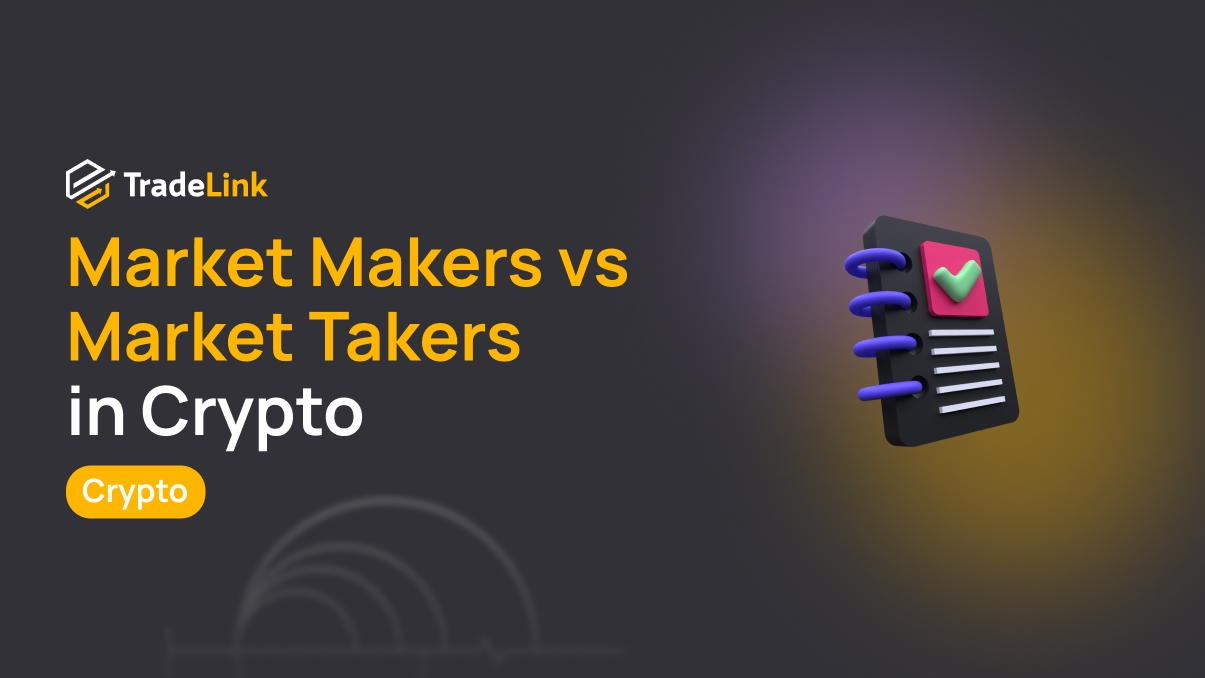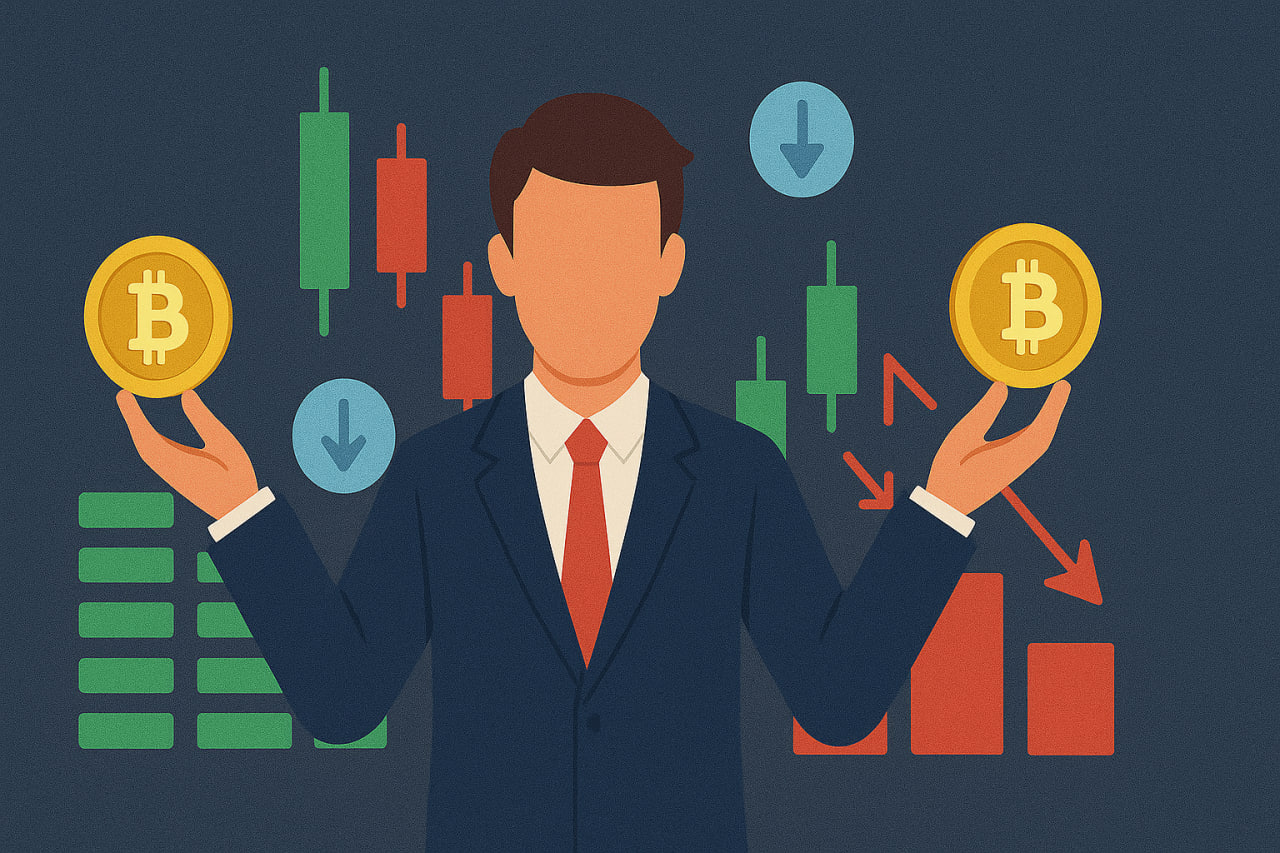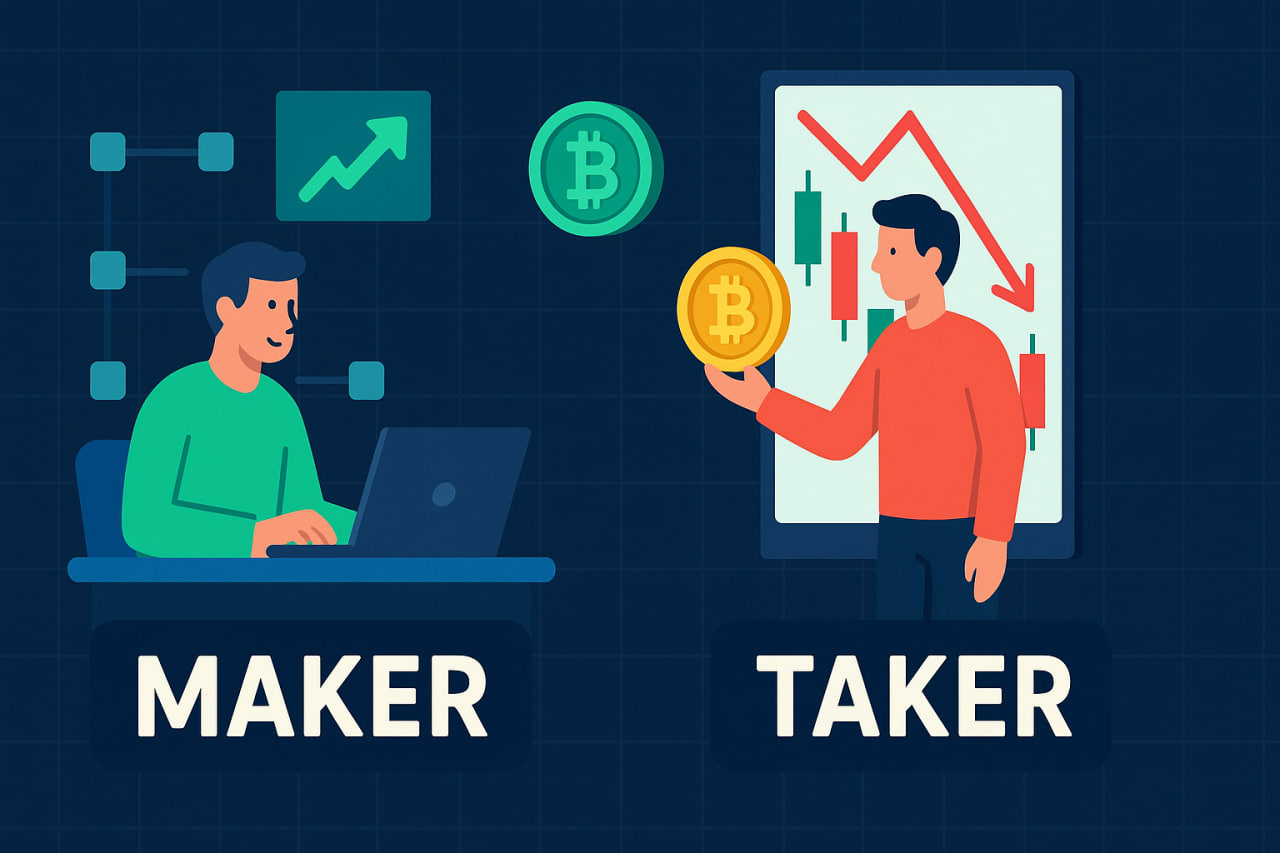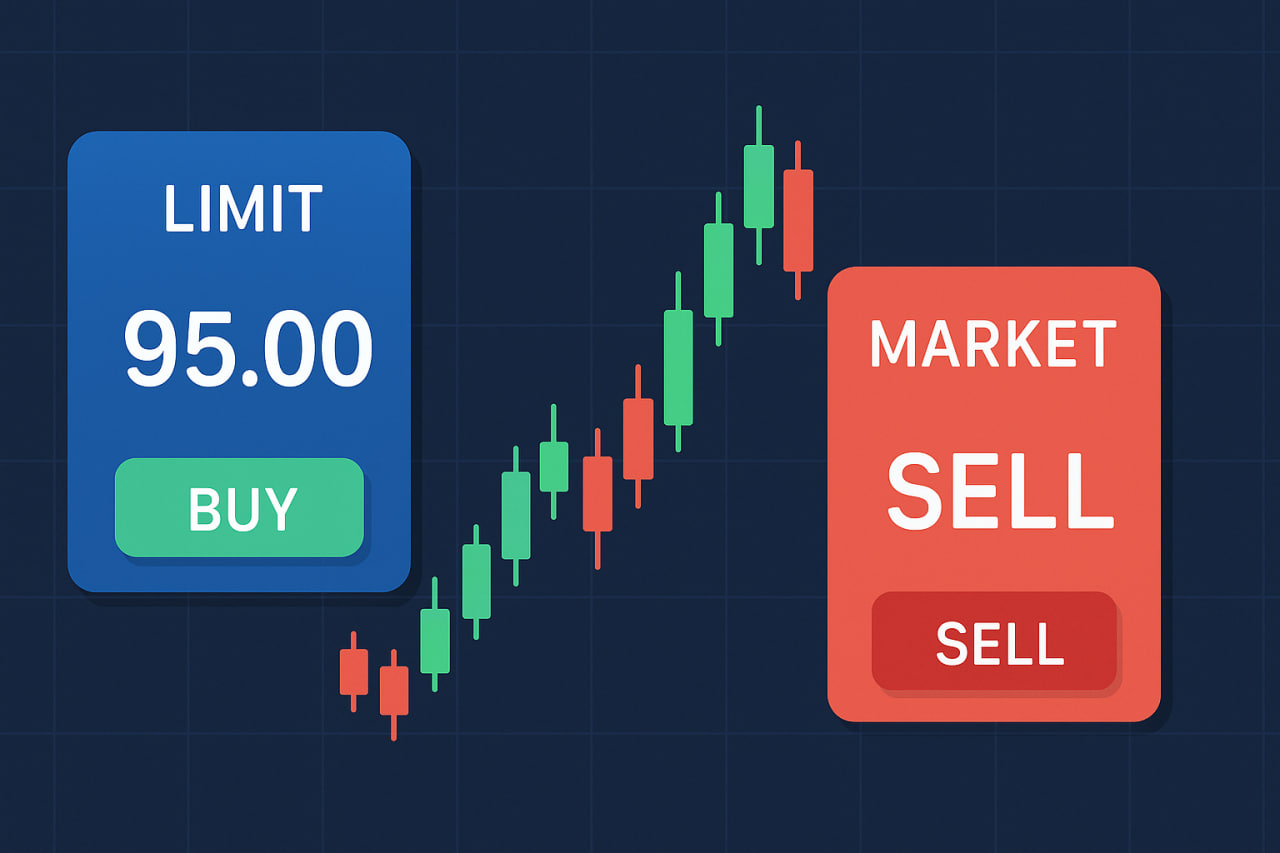Market Makers vs Market Takers in Crypto: What's the Difference

Contents
- Introduction
- Who is a Market Maker on a Crypto Exchange
- Traditional and Automated Market Makers
- Who is a Market Taker and How They Operate
- Key Differences Between Market Makers and Market Takers
- Why Market Makers Are Important for the Crypto Market
- Fees for Makers and Takers
- How to Choose the Right Order Type for Your Strategy
- Conclusion
Introduction
Cryptocurrency exchanges are complex ecosystems where two types of participants play a key role: market makers and market takers. Their interaction determines liquidity, price dynamics, and the stability of trading platforms.
Understanding their functions enables traders and investors to effectively navigate the market, minimise costs, and optimise trading strategies. In this article, we will explore the roles of market makers and market takers, their operations, their differences, and the significance of their roles in the cryptocurrency market.
Who is a Market Maker on a Crypto Exchange

Definition and Functions
A market maker on a crypto exchange is a participant who creates liquidity by placing limit orders in the order book. A limit order is a request to buy or sell an asset at a predetermined price. Market makers ensure the availability of buy (bid) and sell (ask) offers, forming the so-called spread—the difference between the best bid and ask prices.
However, not everyone who uses limit orders is a market maker. Market makers typically act systematically, using trading algorithms to place orders on both sides of the order book (buy and sell) to maintain liquidity. These can be professional traders, hedge funds, or specialised firms collaborating with exchanges.
Role in Market Stabilisation
Market makers minimise price fluctuations by providing a consistent supply and demand in a trading pair. Their presence makes the market more predictable and stable for other participants.
- Creating Liquidity: Market makers add liquidity to the order book, allowing other traders to execute trades quickly.
- Narrowing the Spread: By placing buy and sell orders at the best prices, they reduce the spread.
- Reducing Volatility: The constant presence of market maker orders in the order book mitigates sharp price movements, enabling large market orders to be executed with minimal price slippage.
- Supporting New Assets: When new tokens are listed, market makers help create initial liquidity to establish a stable market.
Traditional and Automated Market Makers

Traditional Market Makers
These are participants who manually or algorithmically place orders on centralised exchanges based on market conditions. In contrast, automated market makers (AMMs) operate on decentralised platforms (DEXs) and use mathematical formulas to set prices.
Automated Market Makers (AMMs)
Automated market makers are algorithms that manage liquidity pools on decentralised exchanges. Instead of an order book, AMMs use mathematical formulas. The price of an asset is determined by the ratio of two assets in a liquidity pool, rather than the actions of traders.
Differences from Traditional Market Makers
- Algorithmic Pricing: Prices are determined by a formula, not market orders.
- Liquidity Pools: Participants contribute assets to a pool, becoming liquidity providers.
- Accessibility: AMMs allow anyone to become a market maker by adding liquidity to a pool.
- Resistance to Manipulation: Formulas reduce the risk of manipulation, though not entirely.
AMMs are popular in DeFi protocols like Uniswap or PancakeSwap, but their effectiveness depends on the pool’s size and participant activity. Some exchanges use hybrid approaches, combining traditional and AMM models for greater efficiency.
Who is a Market Taker and How They Operate
Role and Mechanics
A market taker is a market participant who uses market orders to buy or sell assets at the current prices available in the order book. Market orders are executed immediately, “taking” the liquidity created by market makers.
Impact on the Market
Market takers’ actions directly affect the depth of the order book and can influence prices. For example, a large market buy order can quickly exhaust available sell orders, leading to a price increase.
- Consuming Liquidity: Market takers reduce the volume of orders in the book.
- Impact on Spread: Large orders can widen the spread if market makers are unable to restore it quickly.
- Fast Execution: Market orders ensure immediate trade execution.
Key Differences Between Market Makers and Market Takers

| Characteristic | Market Maker | Market Taker |
|---|---|---|
| Order Type | Limit Orders | Market Orders |
| Role in Liquidity | Creates Liquidity | Consumes Liquidity |
| Impact on Spread | Narrows Spread | May Widen Spread |
Market makers aim to profit from the spread. Market takers, on the other hand, pay for execution speed, sacrificing part of their profits due to higher fees and potential slippage.
Why Market Makers Are Important for the Crypto Market
Impact on the Trading Ecosystem
Market makers play a central role in ensuring liquidity. They are vital for crypto exchanges because high liquidity makes platforms attractive to traders. Their activity reduces trading costs and enhances market stability. Liquid markets attract more participants, and a deep order book minimises the gap between expected and actual execution prices.
On centralised exchanges, market makers often work under agreements with the platform, receiving discounted fees. On decentralised exchanges, their functions are partially performed by AMMs, but traditional market makers may also participate by adding liquidity.
Fees for Makers and Takers
Fee Structure
On most crypto exchanges, makers and takers pay different fees. Makers often receive discounts or rebates (a partial fee refund) because their actions increase liquidity. Takers, on the other hand, pay higher fees since they “take” liquidity. More active traders with high trading volumes may be eligible for discounts. Centralised exchanges (CEX) and decentralised exchanges (DEX) have different fee models.
- Makers: Fees typically range from 0.01% to 0.1% or even negative (rebates).
- Takers: Fees range from 0.05% to 0.2%, depending on the exchange.
This fee structure incentivises participants to become makers, supporting market liquidity.
How to Choose the Right Order Type for Your Strategy

Limit Orders
If your strategy focuses on medium- or long-term perspectives, it likely does not require immediate execution of orders. Limit orders help reduce trading costs by lowering fees and avoiding slippage, allowing you to buy or sell an asset at the exact price specified.
Market Orders
This order type is preferable if your strategy relies on short-term trades and requires immediate market entry. Market orders allow you to instantly buy or sell an asset at the best available price.
Understanding which order type suits your strategy can help minimise trading costs and optimise expenses.
Conclusion
Market makers and market takers are two key types of participants in the cryptocurrency market, driving its liquidity and dynamics. Market makers create the foundation for trading by forming the order book and maintaining narrow spreads, while market takers utilise this liquidity to execute quick trades.
Their interaction impacts trading volumes, fees, and price stability. Understanding these roles allows traders to make informed decisions about order types, minimise costs, and operate effectively on both centralised and decentralised exchanges.